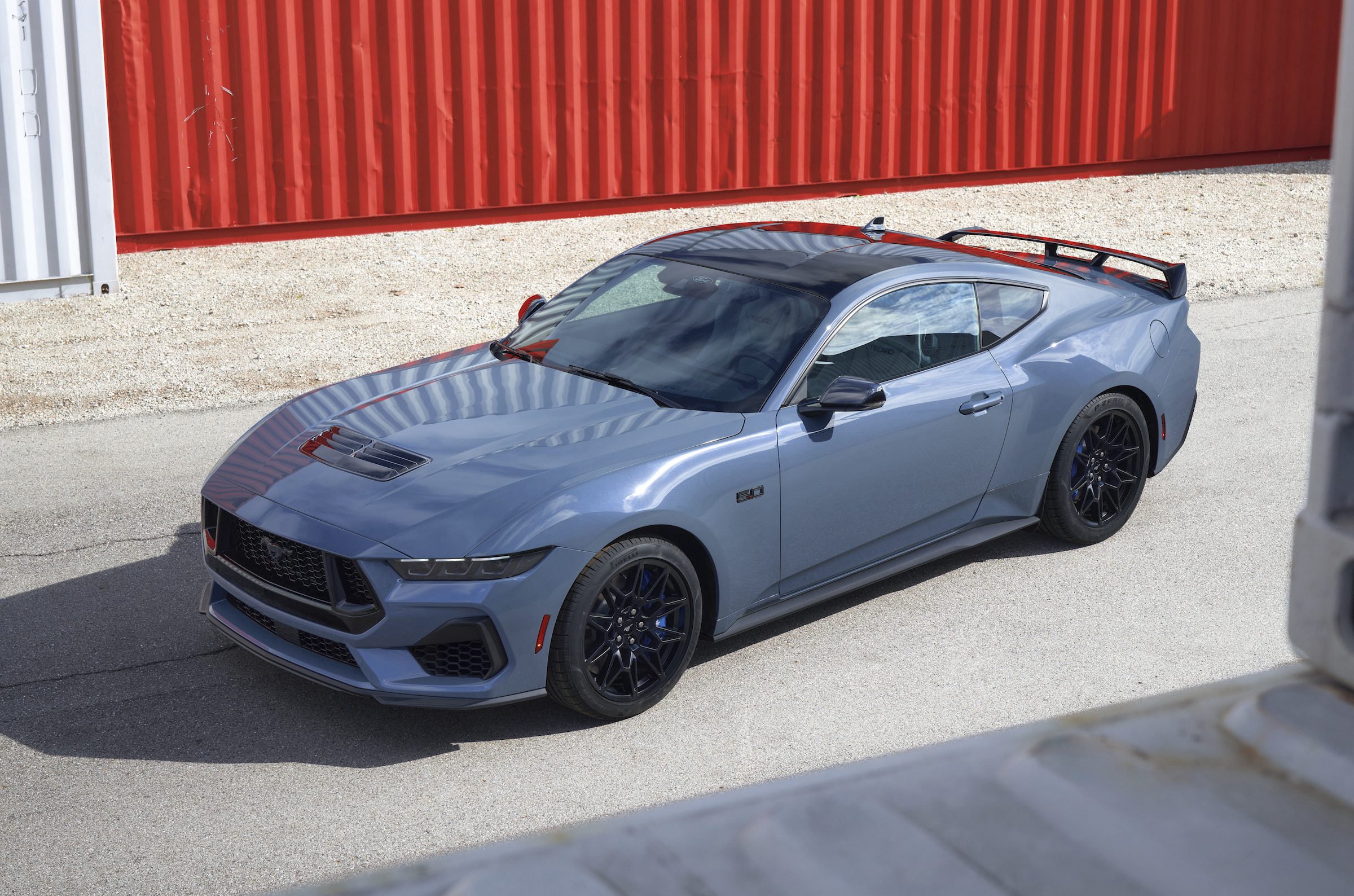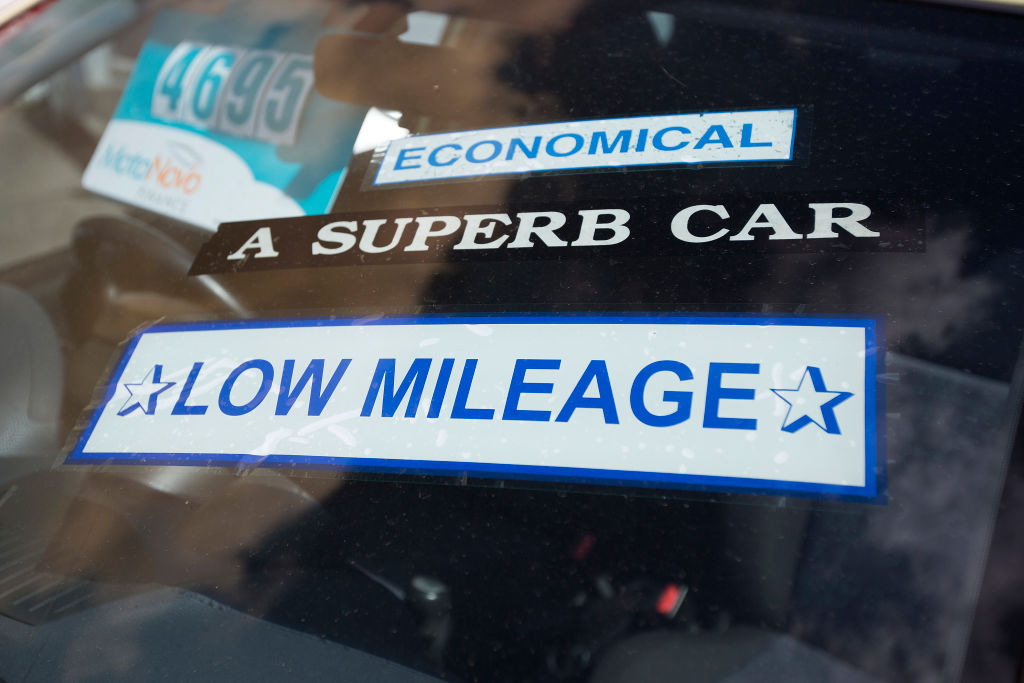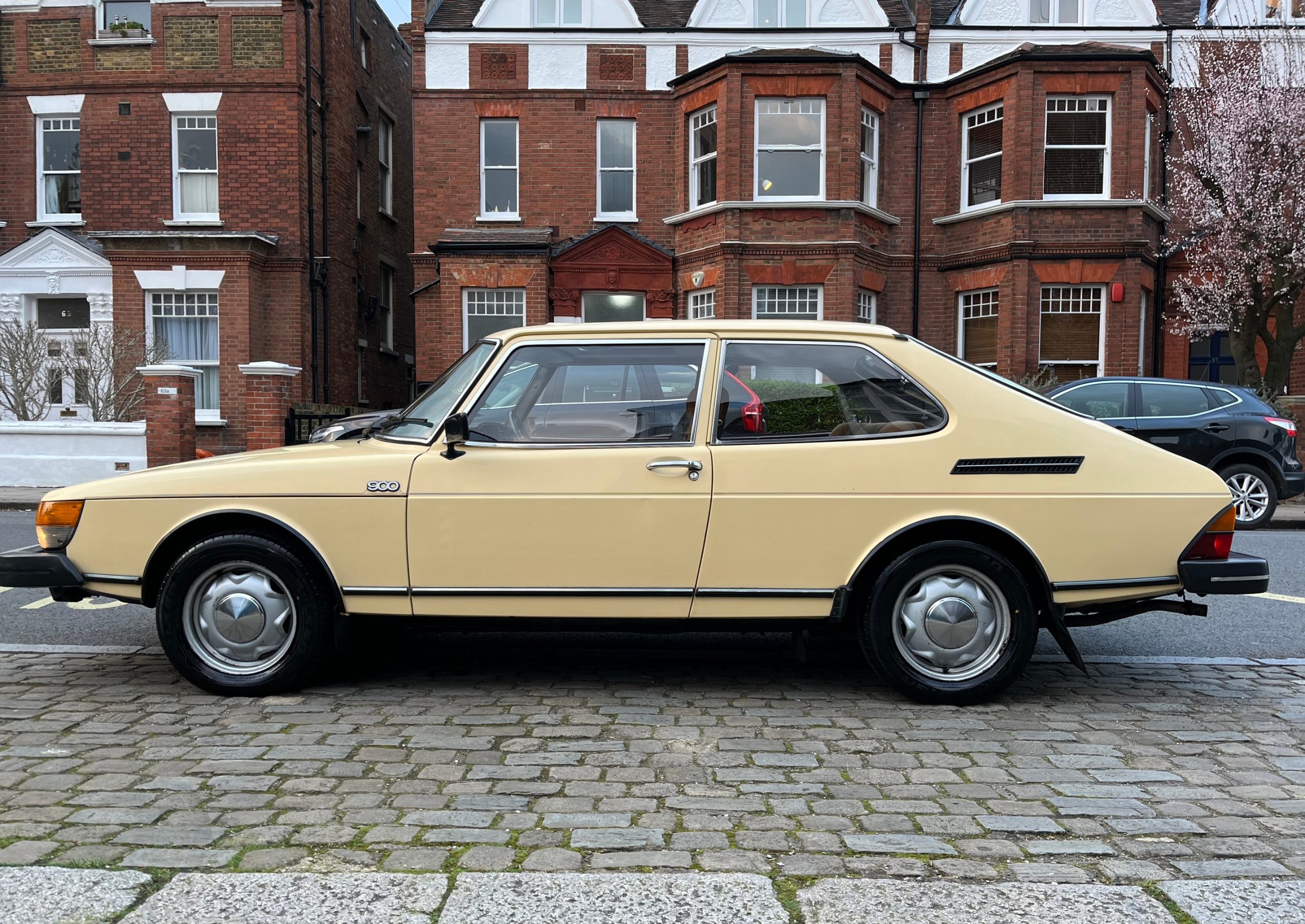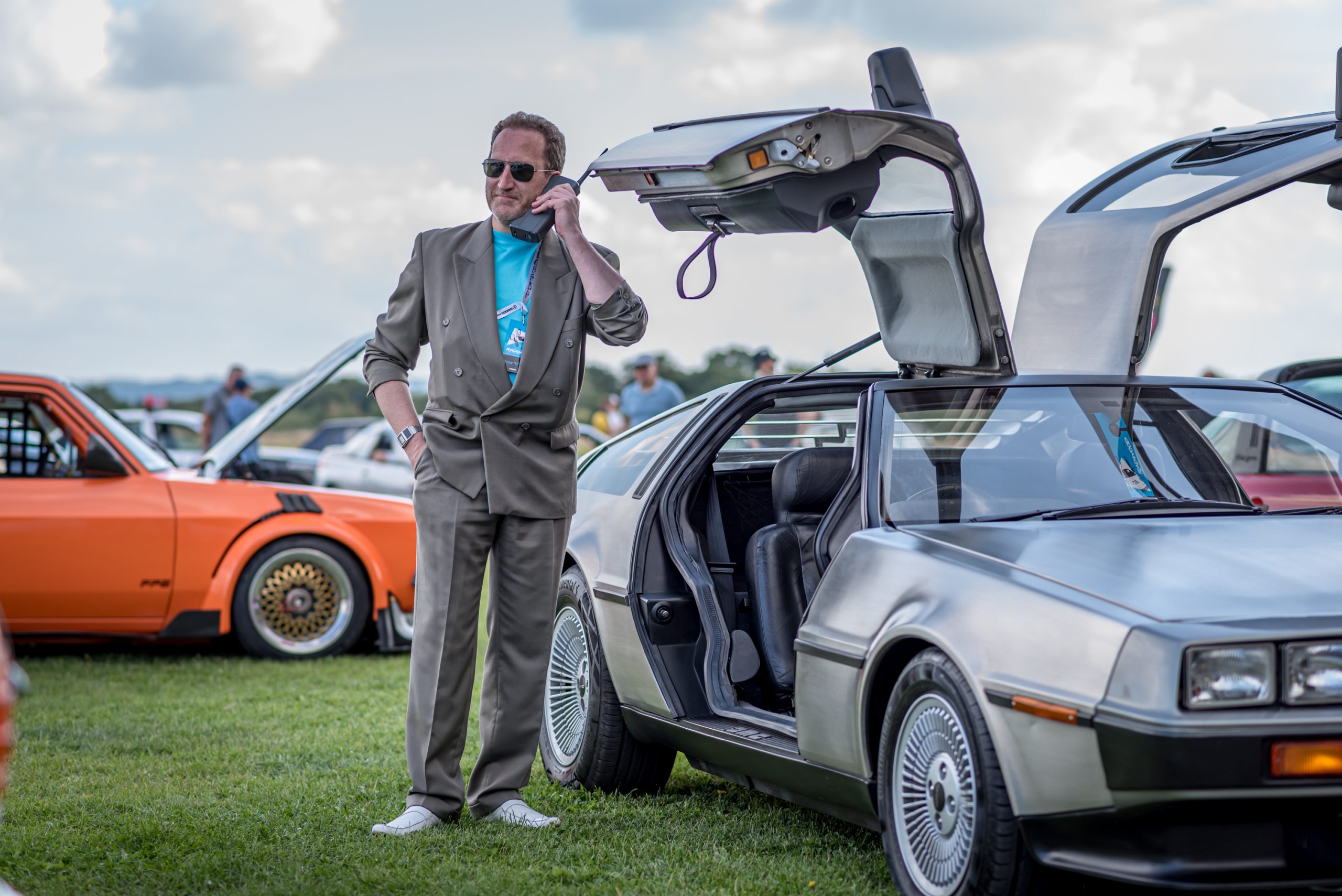Very few cars actually require no introduction, but when Ford rolls out a new generation of Mustang, there’s not much need for ceremony.
It’s pony car time. What more could you want?

Not much, if early signs are any indication.
The seventh-generation Ford Mustang had its “hello world” moment last night in the heart of downtown Detroit. Much of its spec sheet will be familiar reading to fans of the outgoing, sixth-gen (S550) Mustang, but don’t read that as a knock. Plenty of brands would kill to have a sport coupé as good – and as beloved – as the existing ‘Stang.
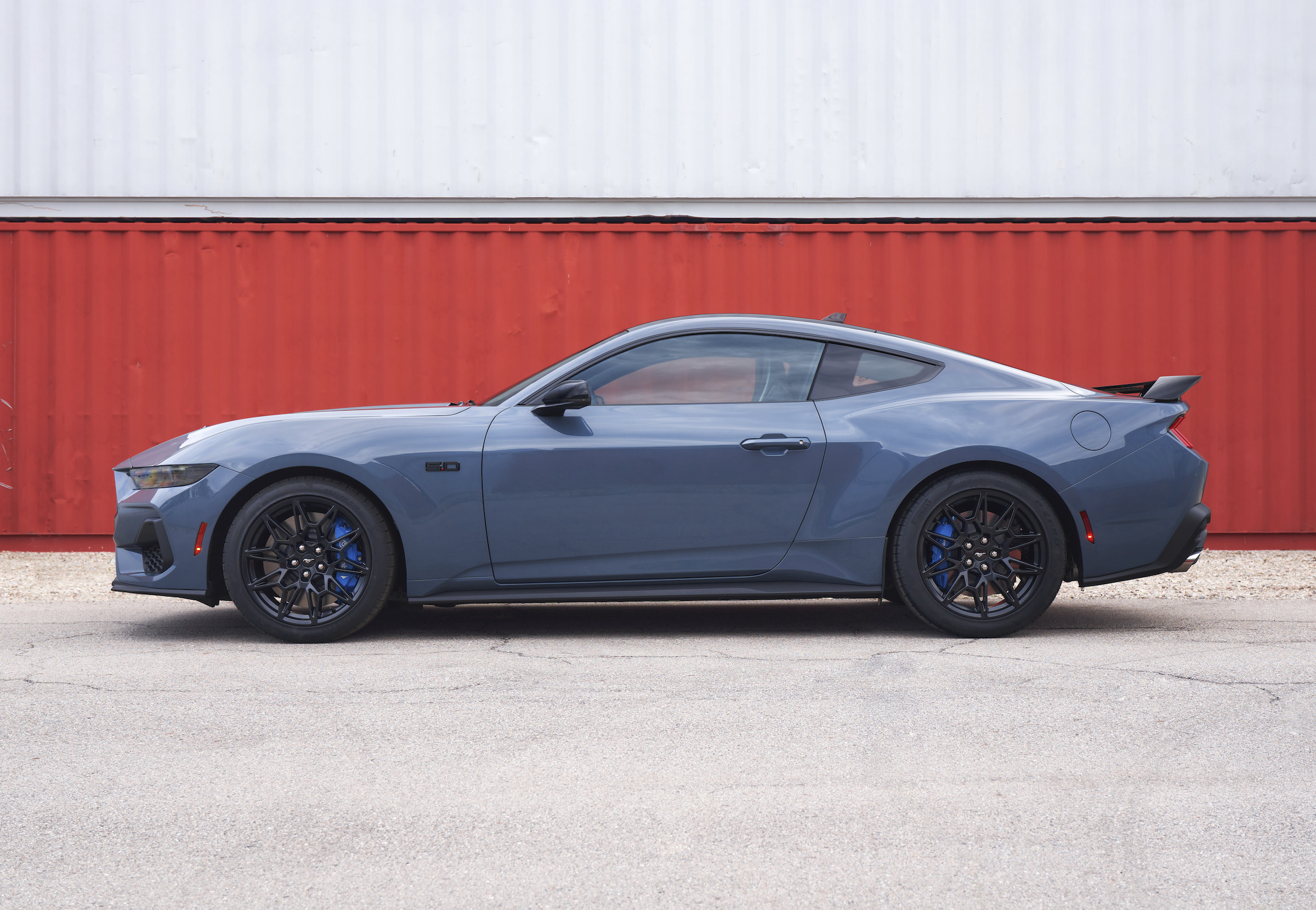
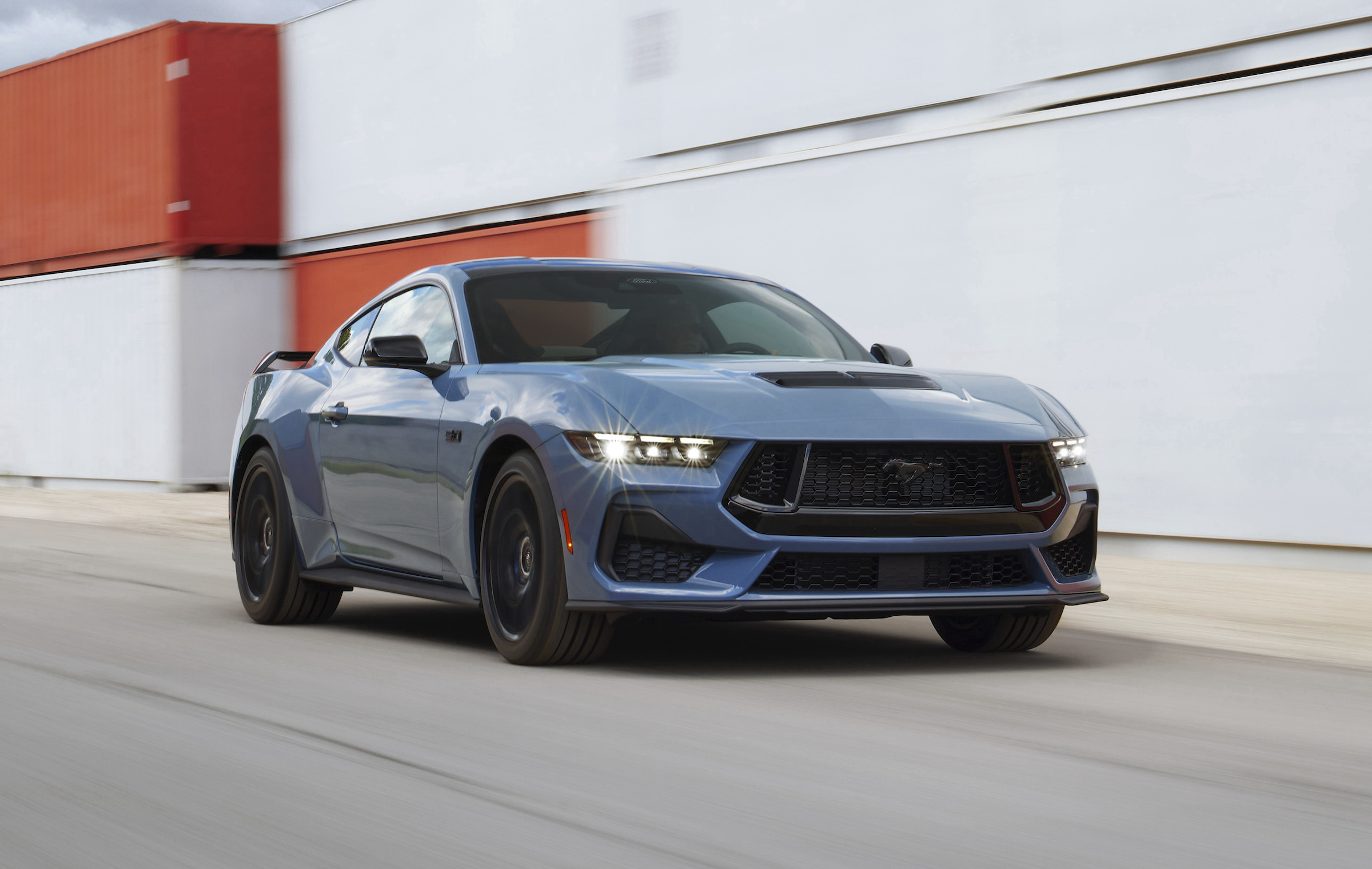
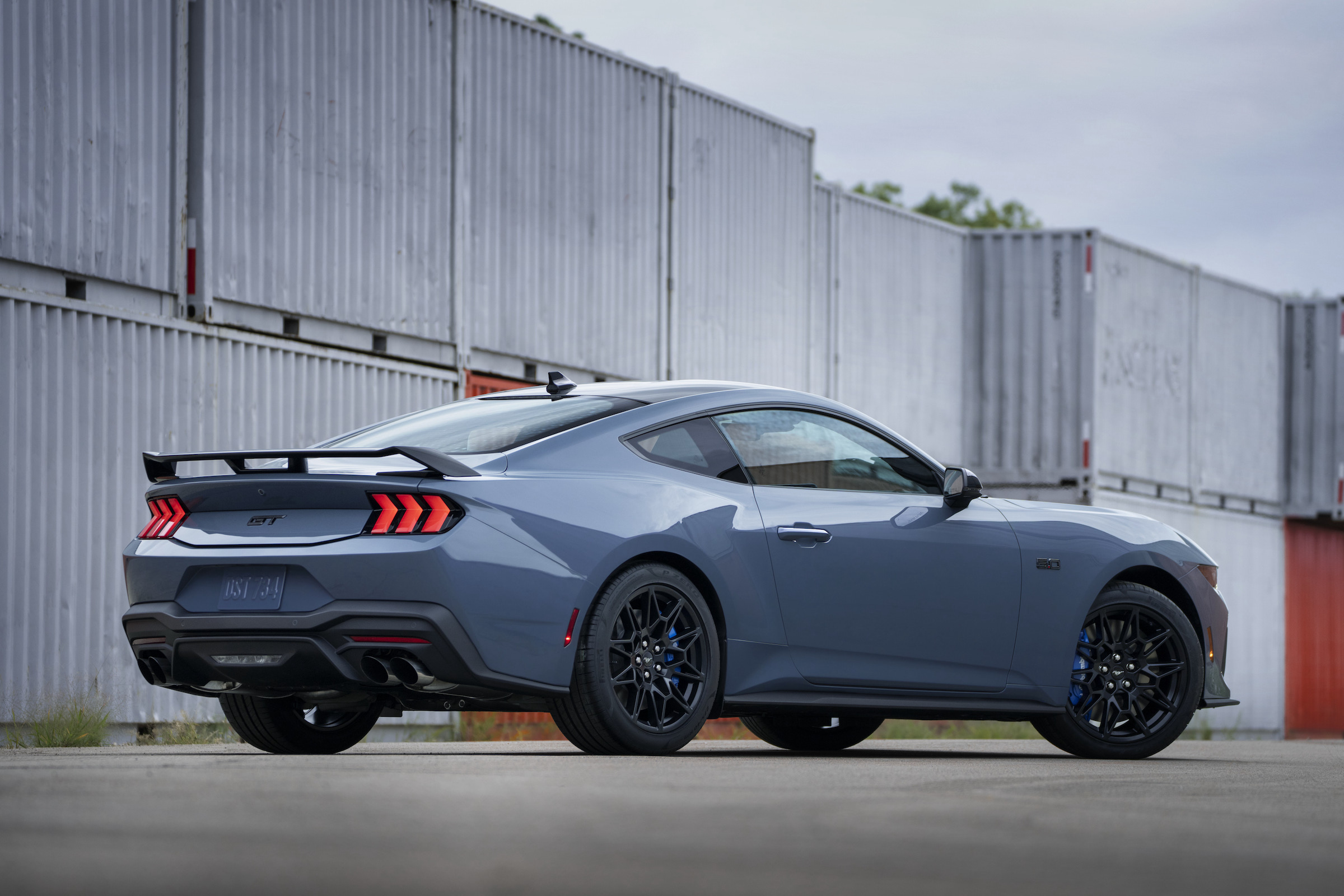
So what’s new?
It would be rude not to start with the engine – well, engines, in this case. The 2024 Mustang will offer two: a 2.3-litre, turbocharged EcoBoost four-cylinder or the 5.0-litre ‘Coyote’ V8. Each engine has been thoroughly reworked, says Ford. It promises that this fourth-generation Coyote will offer the most naturally aspirated horsepower of any Mustang GT yet thanks to new, dual air intakes and a new, dual throttle-body system.
Some quick sums: the outgoing Mustang GT has 444bhp, so we’re looking somewhere north of that. The fact that Ford chose to specify the most horsepower “of any GT” makes us suspect that Ford’s making an exception for the current Mach 1, whose 480bhp Coyote may still top the regular GT. We’ll ballpark 460bhp until Ford confirms output.
Ford was very sparse on details with the EcoBoost, but we’re expecting output to be somewhere in the neighbourhood of 330bhp. Still sounds like fun. And a new Dark Horse model, sitting at the top of the range, should make the best part of 500bhp from its 5.0-litre V8, with track-focused hardware to improve its longevity in hard use.
Each engine will pair with either a six-speed manual (automatic rev-matching included on V8 GTs) or a 10-speed automatic. We’ve known for a while now that the new Mustang would retain a manual gearbox, but hearing it said at a vehicle launch event – said with pride, no less – made us want to snap a salute.
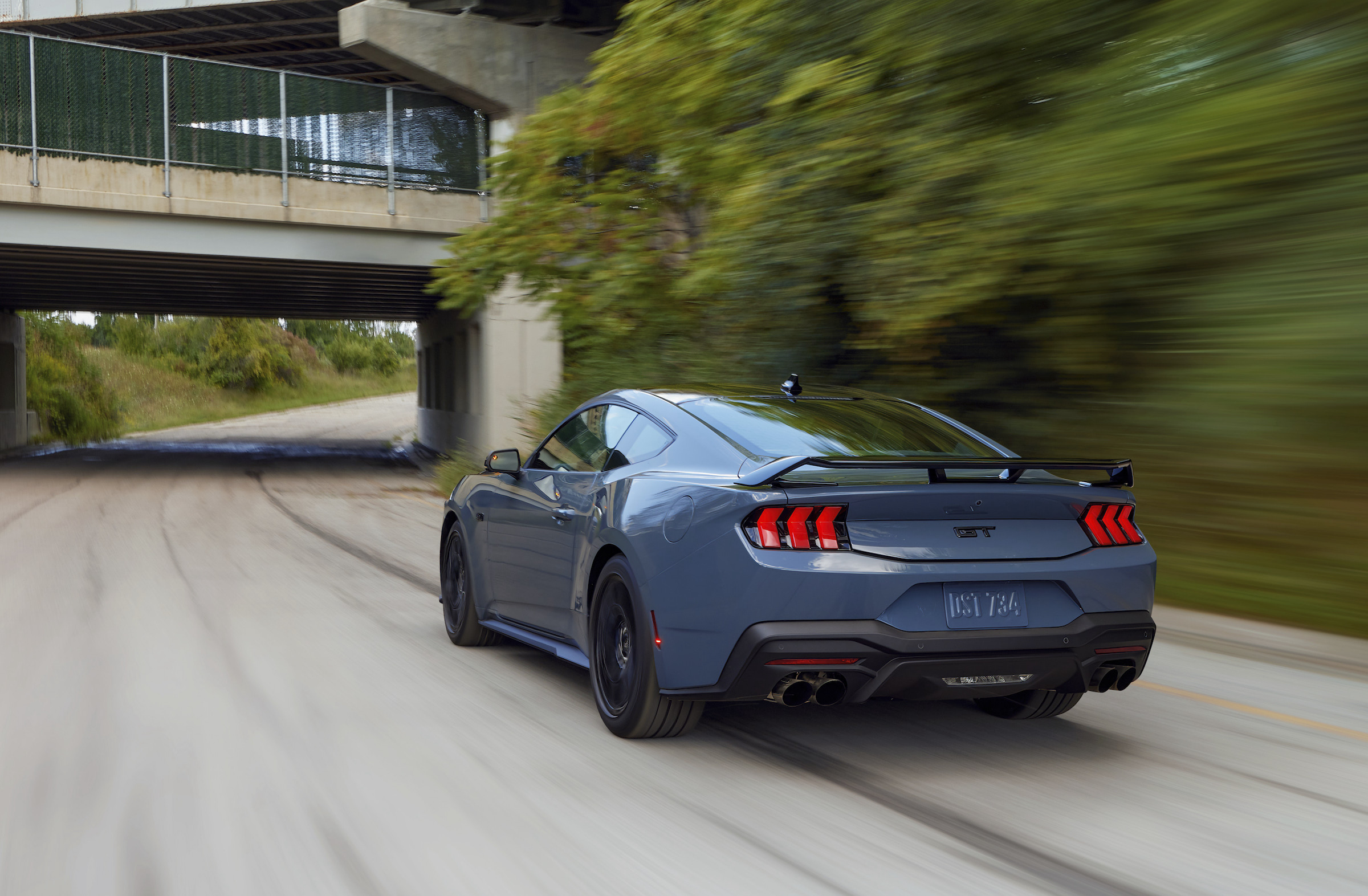
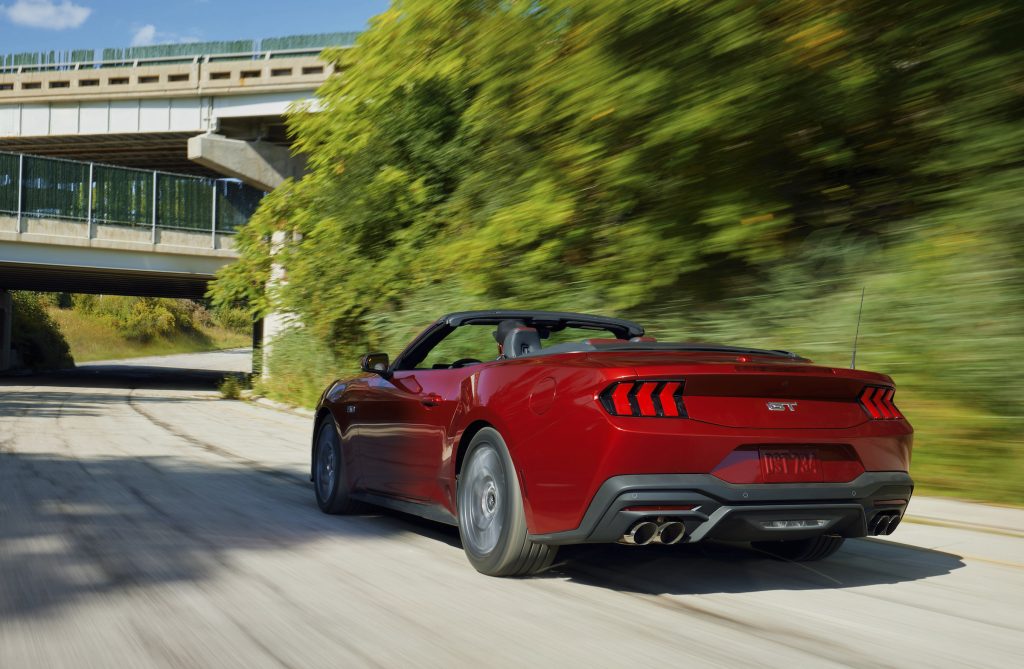
As expected, there was no mention of either a hybrid or an all-wheel-drive variant of the Mustang. For the time being, this one is straight petrol, no chaser.
The driving experience of any new Mustang will be customisable through electronic programming. Steering, throttle response, transmission mapping, and electronic stability control can all be modulated by thumbing through the new Mustang’s six drive modes: normal, sport, slippery, drag, track, and custom.
An optional performance package, available on either engine, includes the hardware you’d need to really tear up a track: front strut tower brace, Torsen limited-slip rear differential, wider wheels and tyres, and larger Brembo brakes. (MagneRide suspension is an additional option.) Spec the performance pack on a V8-powered GT and you’ll also get additional brake ducts and an auxiliary engine oil cooler. Ford’s slick Recaro sport seats and an active exhaust system are also optional as part of the package.
Two new, techy features will debut on the seventh-gen ‘Stang. The first is Remote Rev, which does exactly what it says: Allows you to rev your engine with your key fob. (Sigh.) The second is Electronic Drift Brake, which uses a very mechanical-looking lever in the cabin – that’s not directly connected to a parking brake – to electronically modulate the brakes on the rear wheels, like you see drifters do. We’ll reserve judgement on the latter until we’ve had a chance to test it out. For now, just know you’ll need to spec the aforementioned performance package to get access to this not-a-parking-brake.
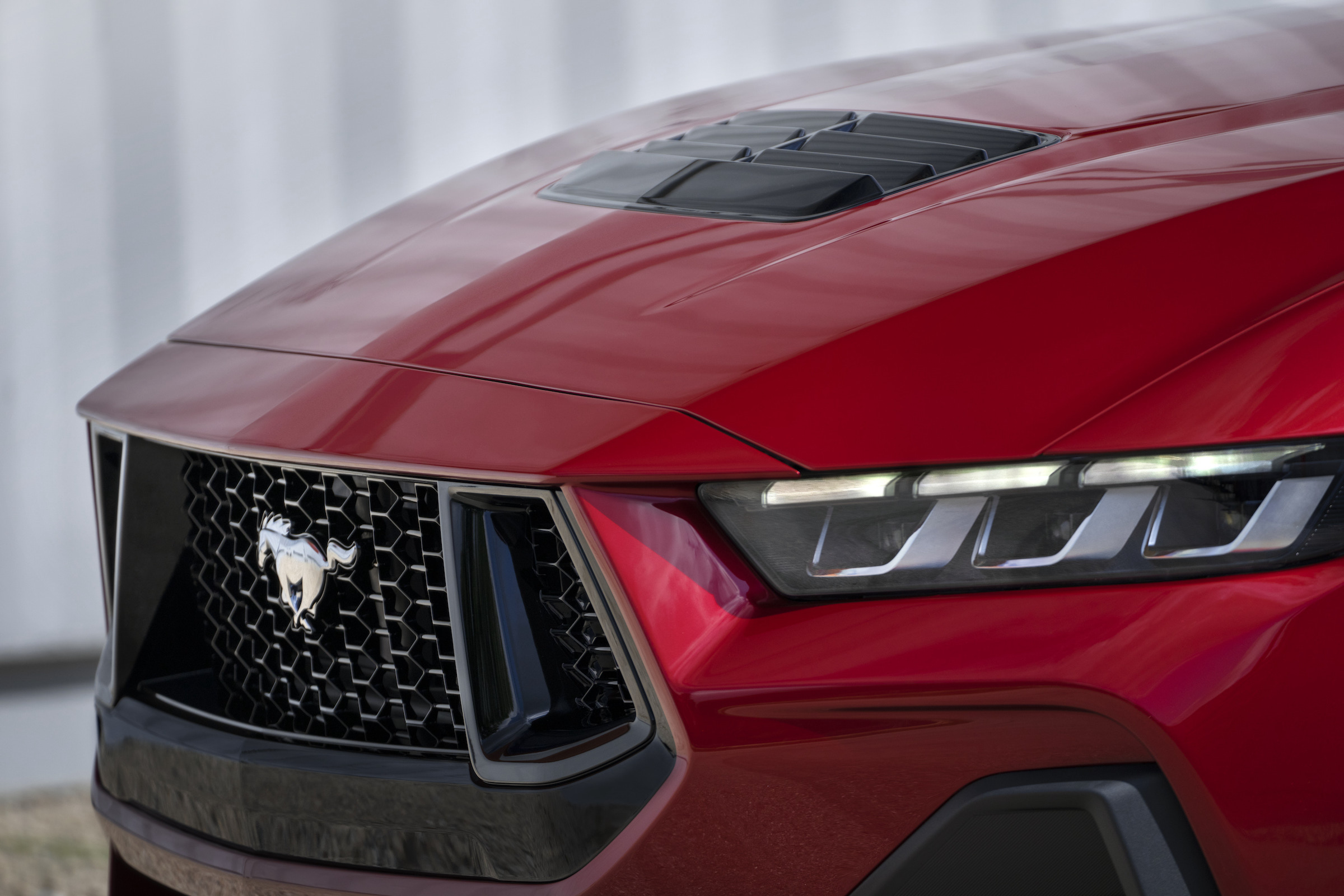
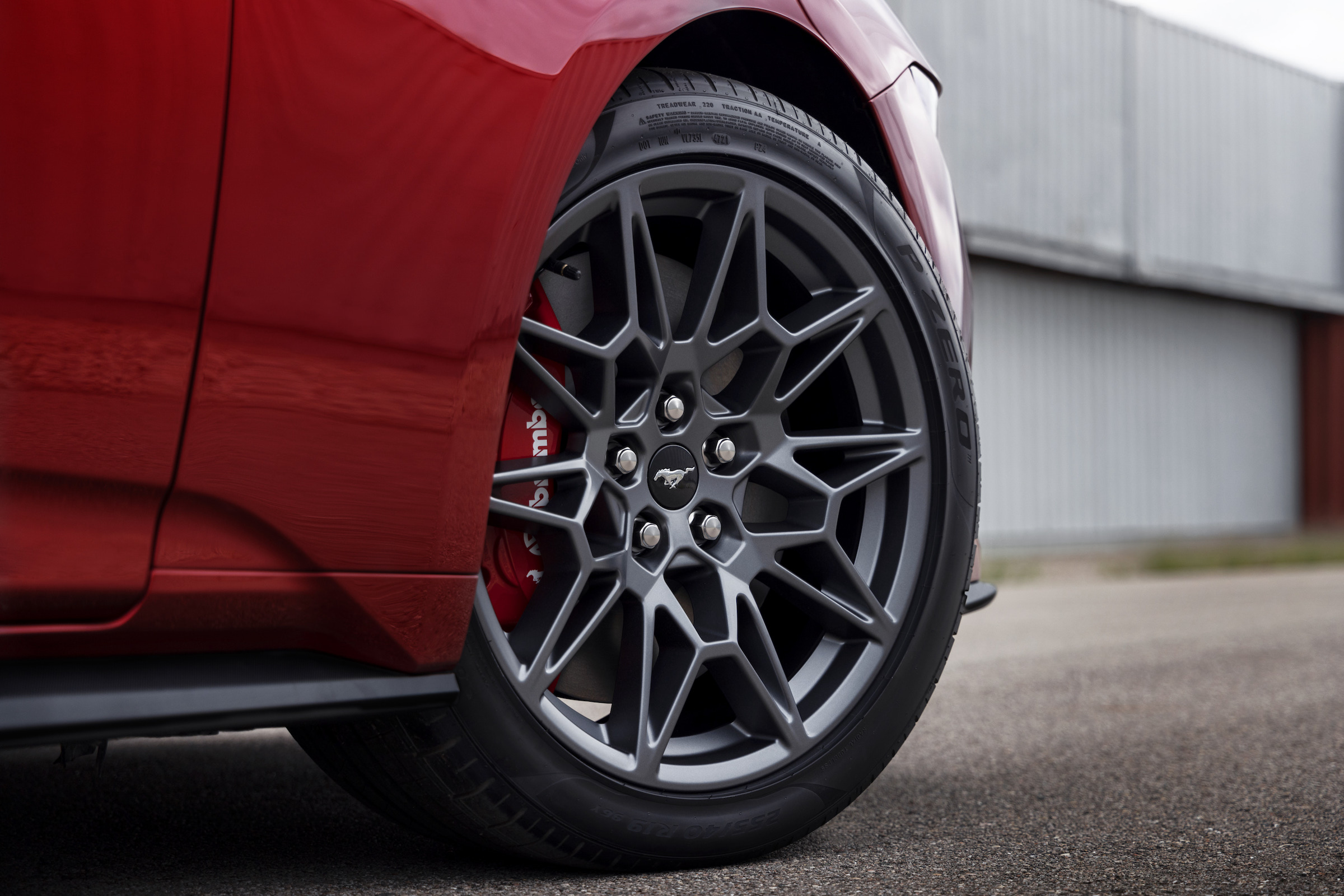
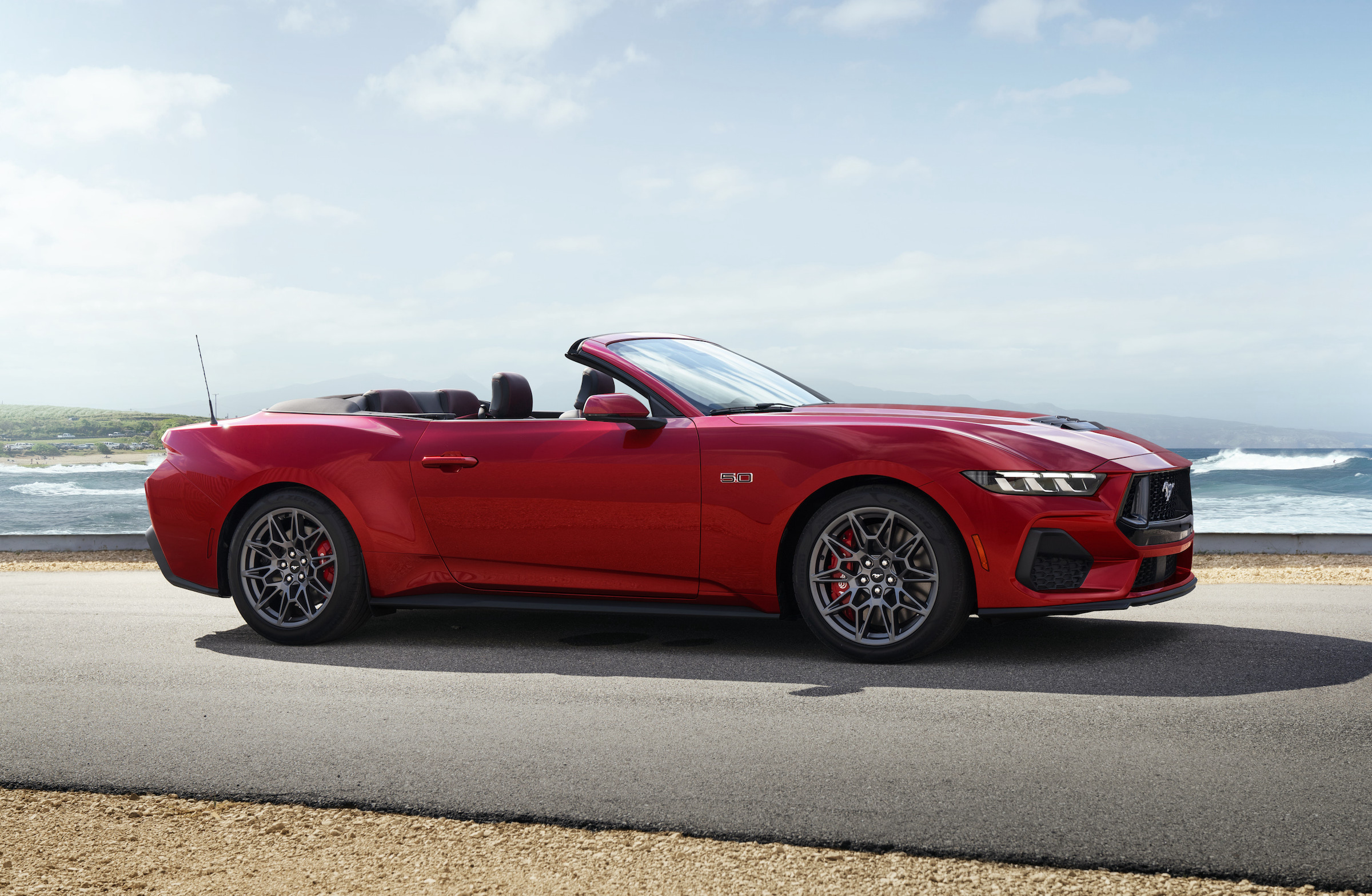
If the new Mustang doesn’t strike you as radically different from its predecessor, it isn’t, still sitting on a variant – albeit heavily revised – of the platform that underpinned its ‘S550’-generation predecessor. That platform surely constrained any wild evolutions. The car is a bit more muscular over the front and rear wheels, but carryovers like the sloped nose and the triple vertical tail lights still help ensure you won’t mistake it for anything other than a Mustang. As is customary, you can opt for a coupé or a convertible.
But the carryover is limited to generalised styling cues. For the first time, the Mustang GT and its smaller-hearted sibling will sport unique front ends. The GT will wear larger front grille openings for better airflow to the necessary coolers, as well as distinct bonnet vents and a unique front splitter. There are 11 exterior colours on offer at launch including two new ones – Vapor Blue and Yellow Squash – as well as a host of stripe packages.
Inside, Ford chose to get techy. Two curved screens, a 12.4-inch unit ahead of the driver and a 13.1-inch unit mounted in the centre, dominate the layout. The instrument cluster is exceedingly customisable, allowing futuristic gauges or, if retro is more your thing, a gauge cluster mimicking that of the 1987–93 Fox-body Mustang. (Hell yeah.)
We’re disappointed to see that the physical buttons for climate control and the excellent flip switches at the bottom of the centre console for things like traction control, active exhaust, and a few others are gone. Controls for each now live within the pixellated world of the screen. Ford says research indicated that removing physical buttons and integrating them into the display was popular among millennials, Gen Z, and traditional Mustang drivers alike, but we’re skeptical that such an arrangement is truly in tune with a driver-oriented vehicle.
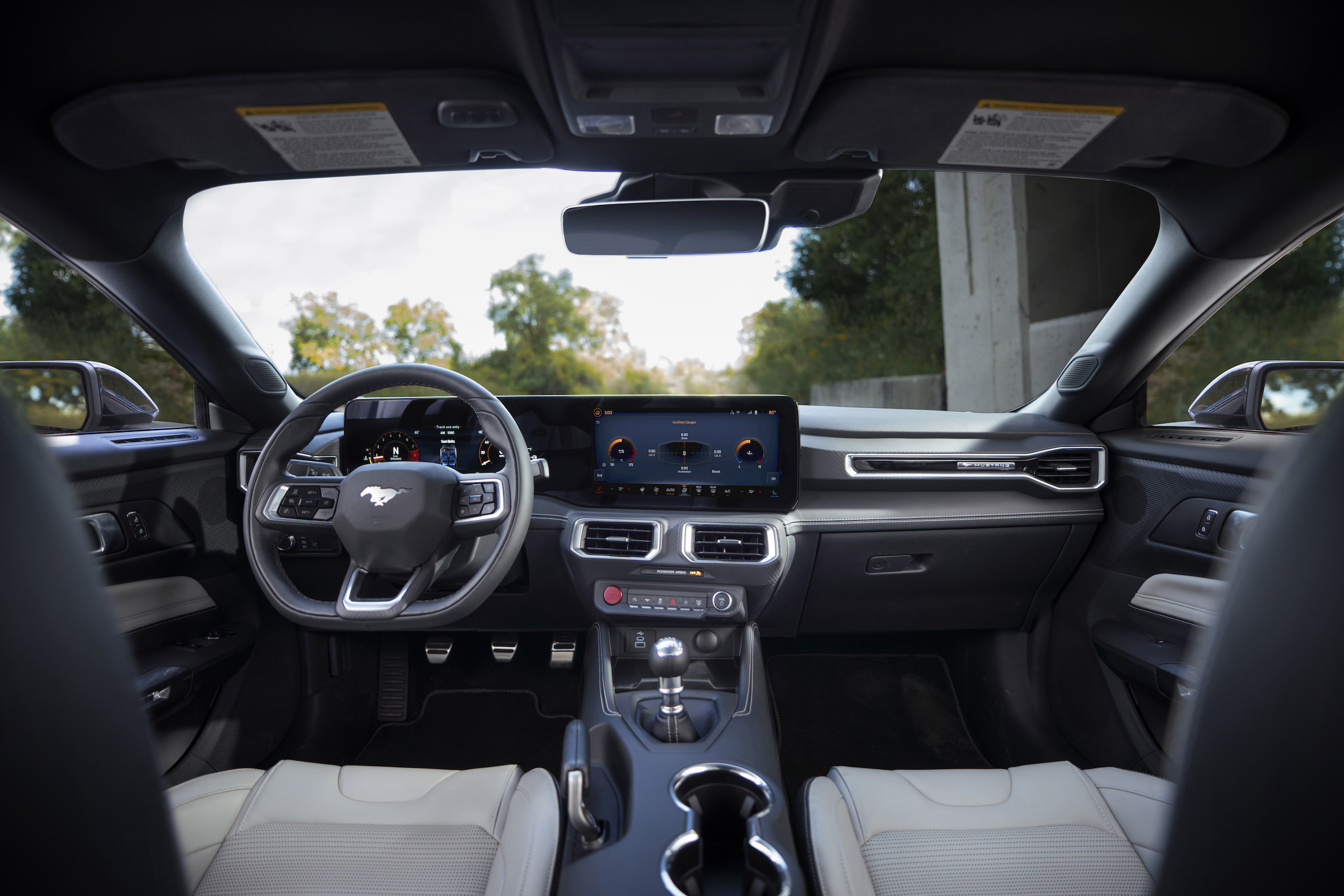
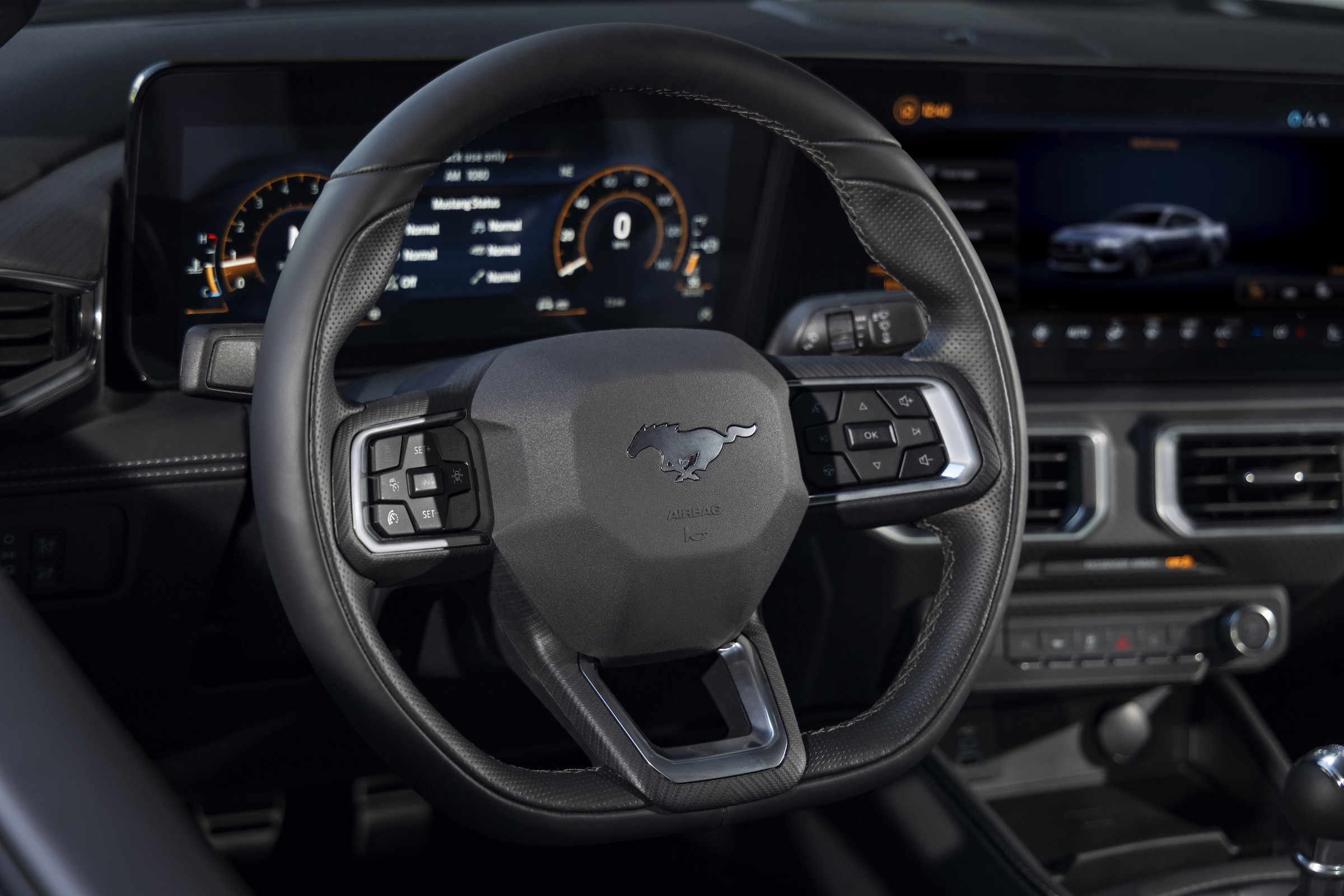
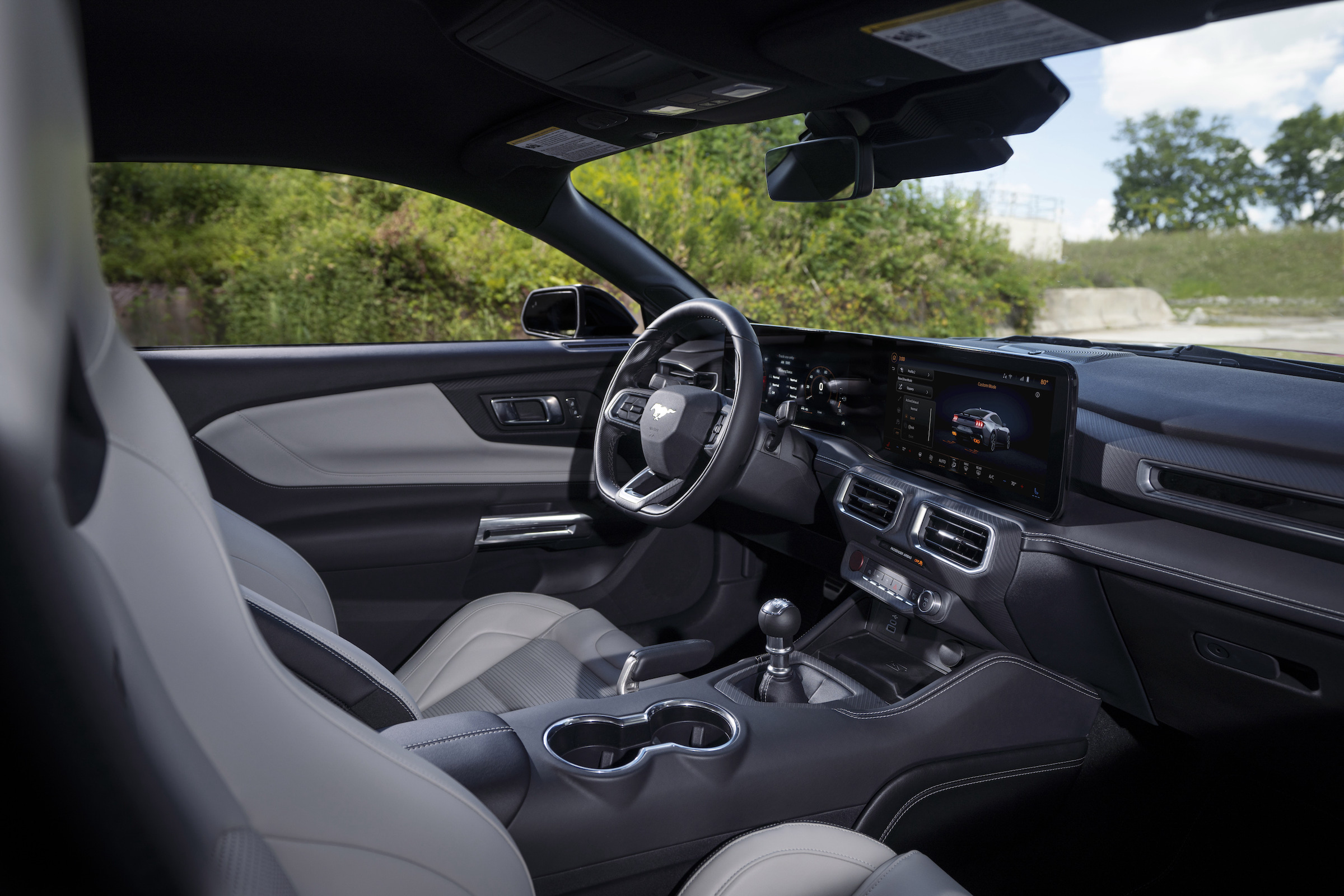
Elsewhere, the news is better. The flat-bottomed steering wheel looks slick. Ford even went so far as to install USB outlets overhead by the rear-view mirror to power things like cameras that you’d mount up for a track-day. Mustang GTs will have full leather seats as an option, while EcoBoost models will get synthetic leather in a host of colours. There’s slick accent stitching and tasteful flourishes to the upholstery as well.
The new seventh-gen Mustang will be built at Ford’s Flat Rock assembly plant south of Detroit. Expect the revitalised pony to go on sale next summer. Key details like power figures, pricing, and more will arrive in the coming months. The good news is, while all information pertains to the US market so far, the Mustang will once again be coming to the UK, too – expect pricing and full specification details later this year.
With both of its cross-town rivals either headed to the big drag strip in the sky or already there, news of an all-new generation of Mustang is significant. It’s fitting that the nameplate that started the pony car wars would be the one to have the last word.
Hell yeah, Ford. Let’s run it back one more time.
This article was originally published on Hagerty US.
Read more
Buyer’s Guide: Ford Mustang (1964-1973)
Freeze Frame: The first TV adverts for Ford’s new pony car create Mustang Mania
The One That Got Away: Barn Find Hunter Tom Cotter’s one-of-one hot rod station wagon
